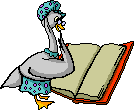Next in our evolutions of creating a novel, we’ll take a look at the main narrative plot points. We’ve got our main characters named and profiled now, so it’s time to outline how our story will progress.
Maybe your tongue is hanging out by now. I know mine is. I mean, we’ve had to set goals to determine just what we want to accomplish. Then we had to look at the difference between conflict and bad situations. Then we talked about all these different characters.
Whew.
David, I just wanted to write a novel. Okay, this stuff is not necessary if you just want to write a novel. I’ve written a number of them without doing any of this.
Well, where are your novels, David? I haven’t seen them at Barnes & Noble or Amazon dot com.
That’s the point. You won’t see them, because they weren’t publishable. That’s why we’re doing all this the hard way, doing all this preliminary work. Let’s not just write a novel. Let’s write one someone will publish and people will buy and read.
A novel we can actually be paid for.
Our first main narrative plot point is the normal world. We can’t just start right off with our antagonist kicking sand in our protagonist’s face. We don’t know anything about either one of them, so who cares?
We need to start out showing our protagonist in his or her normal world. What’s life like for this person? Why should we like him or her?
The inciting incident in Steel Magnolias was Shelby’s (Julia Roberts) pregnancy. M’Lynn (Sally Field) was immediately upset and getting in Shelby’s face about it. If the movie had started with the inciting incident, which, after all, is the beginning of the story-worthy problem—the conflict that drives the whole story—we wouldn’t have liked M’Lynn and wouldn’t have understood why she acted the way she did.
We had to see the normal world first. We had to see M’Lynn’s love for her daughter Shelby, her maternal protection. We had to see her putting on Shelby’s wedding, coming to her rescue when she had an insulin reaction, doing the little things that exhibit a mother’s love for her child.
Having gone through all of that before the inciting incident, we cared deeply about both of these women. We felt Shelby’s desire to have and raise a child and M’Lynn’s worry about what the pregnancy would do to her daughter’s health.
That’s the point of the normal world. We want to show enough of the life of our protag to make the reader care. To make the reader pull for our hero as he or she goes through the trials and tribulations (conflicts) that are about to beset him or her.
We may come to care also for the antag—as we did for Shelby in this instance—or we may have an immediate and intense dislike for him like we did for Roat, Alan Arkin’s character in Wait Until Dark. This varies according to the nature of the antag in a particular story, but we must always be led to care for, hopefully even love, the protag.
How long should the normal world be? Good question. Wish I had a simple answer. Well, the simple answer is, I suppose, as long as it needs to be. Maybe forty pages or maybe ten. In Steel Magnolias we spent a good bit of time in the normal world. In Wait Until Dark we moved right into the inciting incident pretty quickly. Only you can decide the answer to this question for your own story. Just be sure we readers see enough of the protag’s normal world to make us care.
Next week, we’ll take a look at the inciting incident.
Until then, good writing.
Ø How did your favorite book/movie deal with normal world?
Ø How would it have affected your feelings for the characters if they had skipped the normal world and just jumped into the inciting incident?
If you liked this, please comment and repost link on FB or Twitter.
























